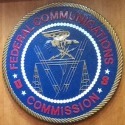'There are many more EBB-enrolled households that claimed they have a dependent child at certain CEP schools than students who are actually enrolled in those schools,' warned the FCC's inspector general.

President Biden earlier this month signed into law a bill that will allocate fully $65 billion for broadband services in the US. And around $14.2 billion of that money will be used to create a permanent $30-a-month-subsidy program to help low-income Americans afford broadband services.
However, a new report from the FCC's inspector general warns of "improper and abusive" fraud that could ultimately imperil a potentially significant chunk of that spending.
"Providers who defraud FCC programs by violating program enrollment rules and claim support for those households will be held accountable and may be subject to civil or criminal sanctions," the report warned.
Already, some FCC commissioners are using the report as a rallying point for stricter spending rules. "The FCC must not only act immediately to end these fraudulent practices and hold those engaging in them accountable, it must go further," Republican FCC Commissioner Brendan Carr said in a statement. "The FCC must put tighter controls in place to ensure that bad actors like these can no longer defraud the American public. After all, every dollar that is illegally siphoned off from this program is a dollar that cannot go towards connecting households that still lack a broadband connection."
Counting the EBB costs
At issue is the $3.2 billion Emergency Broadband Benefit (EBB) program created by the FCC during the early days of the COVID-19 pandemic to help low-income Americans afford broadband connections. After all, pandemic lockdown orders made working and schooling online a necessity for millions around the world.
More than 5 million Americans have subsequently signed up for the EBB program, which provides up to $50 per month for broadband service alongside up to $100 for a computer or tablet.
However, according to the new report from the FCC's Office of Inspector General (OIG), an unknown but potentially large number of "sales agents" are cheating the EBB's verification system.
As the OIG explained, one mechanism that Internet providers can use to verify potential EBB customers is the USDA National School Lunch Program's Community Eligibility Provision (CEP). If a student qualifies for a free or reduced-price school lunch or breakfast, then their household can also qualify for EBB subsidies.
"EBB enrollment data clearly show a number of CEP schools are grossly overrepresented in EBB household enrollments when compared to the actual student enrollment at those schools," the OIG wrote. "In short, there are many more EBB-enrolled households that claimed they have a dependent child at certain CEP schools than students who are actually enrolled in those schools."
For example, the OIG reported that an unnamed school in Florida counts just 200 students – but was used to enroll almost 2,000 EBB households for broadband service. The report also highlighted similar situations at schools in locations ranging from Alaska to New York.
"Evidence shows this is not consumer-driven fraud – enrollment data directly links certain providers and their sales agents to these enrollments," the OIG wrote. However, the report did not identify the providers or sales agents involved in the issue.
Broadly, the OIG used its report to warn Internet providers and others that it might come for them. "Providers are liable for program rule violations, and the commission has a clear history of finding 'their liability extends to violations on the part of their agents, contractors or representatives,'" the OIG wrote.
Here we go again
Perhaps not surprisingly, this isn't the first time federal inspectors have reported on shenanigans in federal spending programs, including in the broadband industry. For example, a 2017 report from the Government Accountability Office (GAO) found significant evidence of fraud in the FCC's Lifeline program.
Specifically, a three-year audit of Lifeline showed that more than one-third of the customers in the program could not be confirmed as actually eligible for Lifeline subsidies, and that phone companies approved Lifeline applicants with false personal information nearly two-thirds of the time. The report also tallied $1.2 million annually going to fictitious identities or recipients who were dead.
Lifeline traces its origins to a 1980s-era effort by the Reagan administration to help poor Americans pay for phone service.
In response to the GAO's findings, the FCC in 2019 introduced a "National Verifier" database designed to verify subscriber eligibility, check for duplicate benefits and calculate support payments.
As the FCC begins preparing to spend billions of additional dollars allocated by Biden's infrastructure bill, it should consider similar – or potentially more significant – provisions, according to some FCC commissioners.
"Taking action now is all the more important as the FCC was recently granted $14.2 billion from Congress to support the next phase of the EBB program, which will now be known as the Affordable Connectivity Program," FCC Commissions Carr argued. "As the FCC seeks to implement this new program, we must ensure that it contains sufficient safeguards to prevent – not invite – these and other abuses."
Related posts:
— Mike Dano, Editorial Director, 5G & Mobile Strategies, Light Reading | @mikeddano
About the Author(s)
You May Also Like











